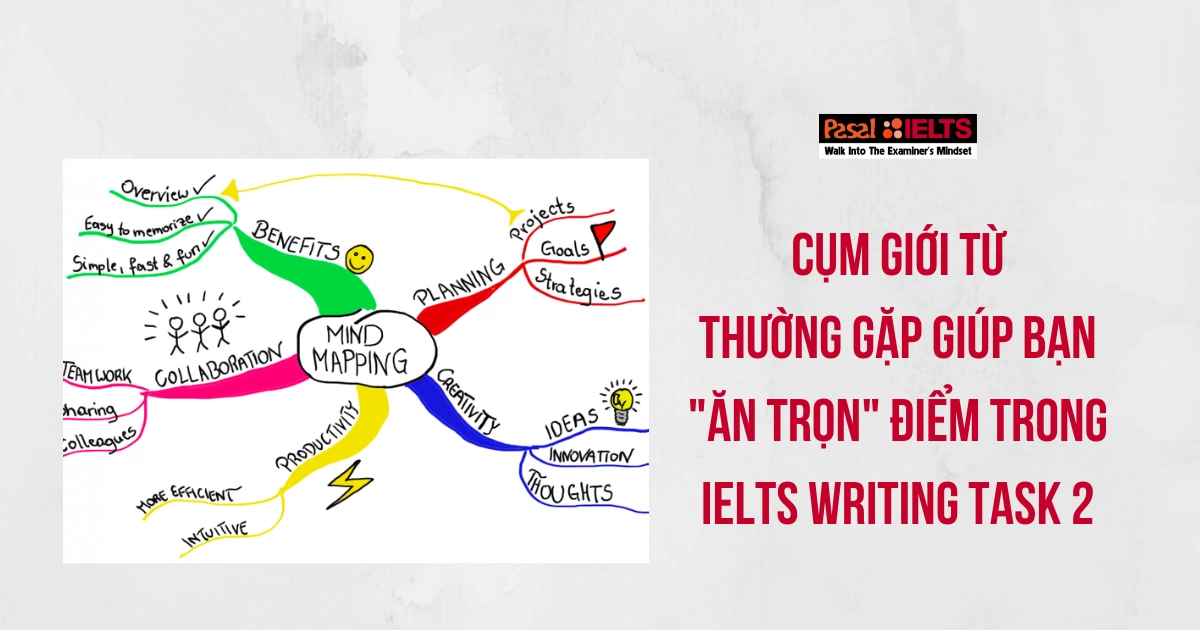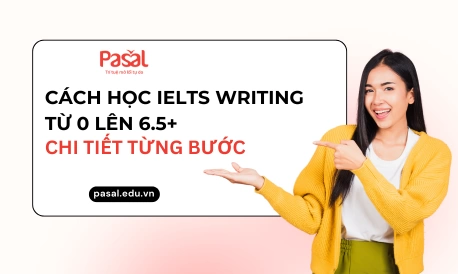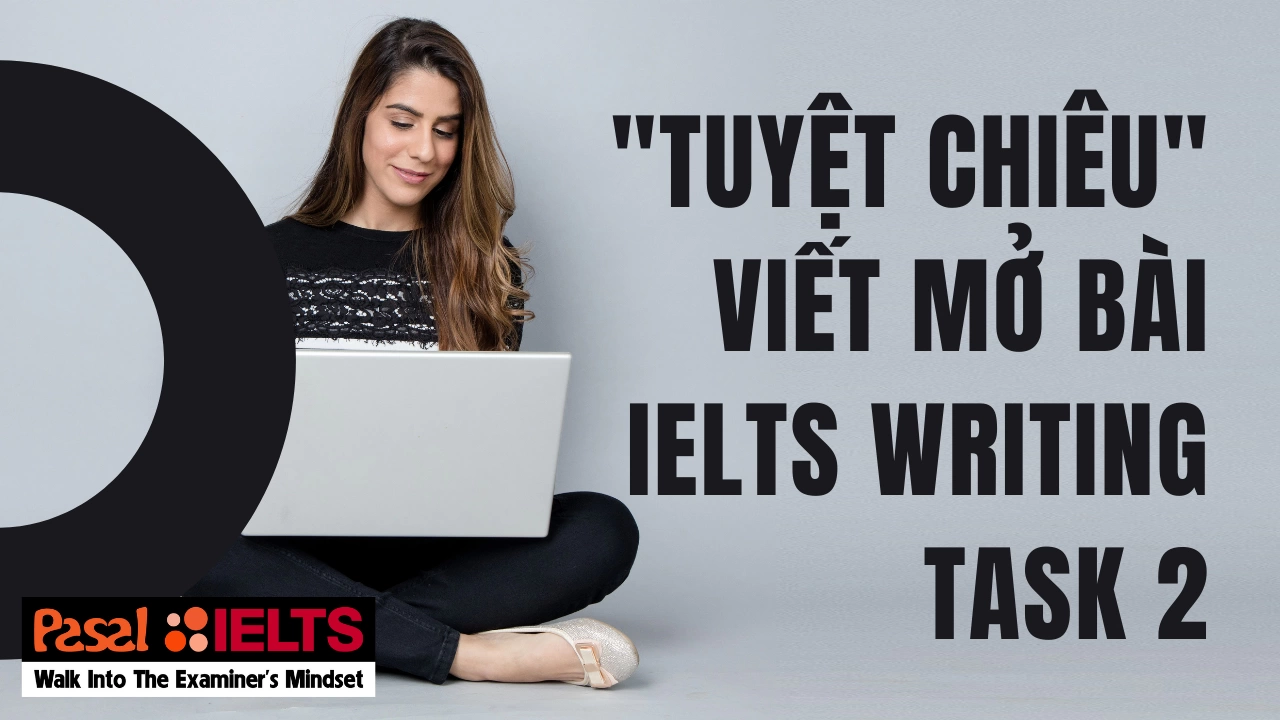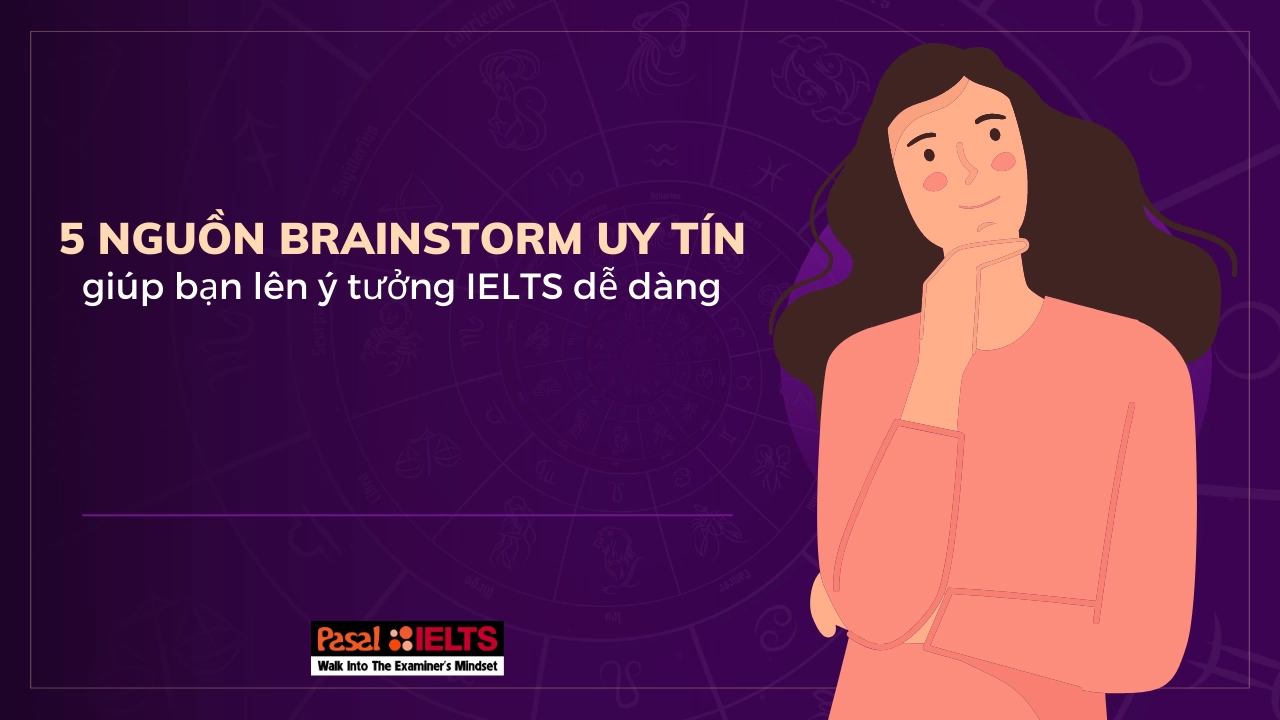IELTS Simon: Bài mẫu IELTS Writing Task 2 dạng Advantages – Disadvantages
Nội dung quan trọng:
- Một số thông tin về dạng bài Advantages – Disadvantages trong IELTS Writing Task 2: bao hàm rất nhiều chủ đề và dạng bài đa dạng, dạng bài này thường sẽ nêu ra ý kiến và yêu cầu bạn phải đưa nhận xét về mặt tích cực và tiêu cực của ý kiến đó.
- Cách nhận biết dạng bài Advantages and Disadvantages: Các câu hỏi thường xuất hiện ở cuối đề bài, thường chứa sẵn keyword “advantages and disadvantages”.
- Tiêu chí chấm điểm của dạng Advantages and Disadvantages: Task Response, Coherence and Cohesion, Lexical Resource, Grammatical Range and Accuracy.
- Các bước viết bài IELTS Writing Task 2 Advantages and Disadvantages: Mở bài (Introduction -> General Statement ->Thesis statement), Thân bài (Paragraph 1: ưu điểm 1 + ưu điểm 2,…; Paragraph 2: Viết về mặt tiêu cực của vấn đề, Kết luận: Conclusion -> Restatement of the answer -> Recommendation.
- Một số lưu ý khi viết bài: viết tối thiểu 250 từ, bắt buộc phải sử dụng ngôn ngữ học thuật,trang trọng, hạn chế sử dụng tiếng lóng,..
- Tham khảo một số bài mẫu IELTS Writing Task 2 Advantages and Disadvantages từ Chuyên gia Simon Corcoran ở bài viết dưới đây.
Dạng bài Advantages and Disadvantage được coi là một dạng tương đối khó và có tần suất xuất hiện vô cùng thường xuyên. Vậy nên để có thể làm tốt và đạt điểm số cao trong bài thi IELTS Writing Task 2, hãy cùng Pasal tìm hiểu kỹ và tham khảo một số bài mẫu từ IELTS Simon – website luyện thi IELTS của chuyên gia Simon Corcoran – Cựu giám khảo kỳ thi IELTS.
Giới thiệu về dạng bài Advantages – Disadvantages trong IELTS Writing Task 2
IELTS Writing Task 2 là một phần thi khó nhằn và khó lấy điểm. Nó bao hàm rất nhiều chủ đề và dạng bài đa dạng, trong đó dạng bài Advantages & Disadvantages là thể loại essay thường được gặp trong các đề thi nhất. Các câu hỏi thuộc dạng bài Advantages & Disadvantages thường sẽ nêu ra ý kiến và yêu cầu bạn phải đưa nhận xét, quan điểm của mình về mặt tích cực (advanatages) và tiêu cực (disadvantages) của ý kiến đó.
Ở dạng bài này, bạn bắt buộc phải đưa ra được đầy đủ luận điểm để support cho cả 2 mặt tích cực và tiêu cực, mỗi mặt ở một đoạn thân bài riêng. Cần lưu ý độ dài của hai đoạn thân bài phải tương đối bằng nhau, không được phân tích chi tiết hơn hẳn một mặt nào so với mặt còn lại để đảm bảo mỗi luận điểm đều được phân tích và khai thác đầy đủ, tránh mất điểm với tiêu chí Task Response. Tuy nhiên, nếu đề bài yêu cầu đưa ra quan điểm cá nhân, quan điểm này cần được thể hiện xuyên suốt cả ở 3 phần mở bài – thân bài – kết bài của bài essay.
Cách nhận biết dạng bài Advantages and Disadvantages
Dấu hiệu nhận biết: Các câu hỏi thường xuất hiện ở cuối đề bài
Không yêu cầu nêu quan điểm cá nhân:
-
What are the advantages and disadvantages…?
-
Discuss the advantages and disadvantages
Có yêu cầu nêu quan điểm cá nhân:
-
Do you think the advantages outweigh the disadvantages?
-
Discuss the advantages and disadvantages and give your own opinion
Đây là dạng bài dễ nhận biết nhất do thường chứa sẵn keyword “advantages and disadvantages”.
Tiêu chí chấm điểm của dạng Advantages and Disadvantages trong bài thi IELTS Writing Task 2
-
Task Response: Bạn phải trả lời thật cụ thể và chính xác câu hỏi mà giám khảo đã yêu cầu trong đề bài. Các luận điểm trong bài viết phải hợp lý, bên cạnh đó phải được phân tích một cách rõ ràng, nhất quán.
-
Coherence and Cohesion: Bài viết của bạn phải có sự gắn kết chặt chẽ. Bạn cần có kỹ năng sắp xếp các lập luận và nội dung được đưa ra trong bài luận phải theo một trật tự rõ ràng, có tính logic nhất định. Ngoài ra, bài viết của bạn còn phải thực sự dễ hiểu.
-
Lexical Resource: Ngoài việc dùng đúng từ vựng, từ vựng trong bài của bạn phải thật sự phong phú, được sử dụng một cách tự nhiên, bên cạnh đó bạn phải thể hiện được sự linh hoạt trong việc chọn lựa từ ngữ để đưa vào bài viết.
-
Grammatical Range and Accuracy: Bạn sở hữu khả năng sử dụng các cấu trúc câu đơn, cấu trúc câu ghép, cúc trúc câu phức một cách thành thạo và sử dụng thật chính xác đối với yêu cầu của đề thi.
Các bước chi tiết viết bài IELTS Writing Task 2 Advantages and Disadvantages
1. Mở bài – Introduction
General Statement: paraphrase đề bài
Thesis statement: giới thiệu rằng có những ưu điểm và nhược điểm (+ so sánh nếu cần thiết)
Bạn có thể sử dụng một vài cụm từ và cấu trúc như sau:
-
Nowadays,…
-
It is increasingly clear that …..
-
There is an irrefutable fact that…..
-
It is also believed that …… has its/ their own advantages and disadvantages
2. Thân bài – Body
– Ở đoạn Paragraph 1: Bạn có thể viết về mặt tích cực của vấn đề như sau:
It can be said that ….. has some noteworthy positive effects.
+ Nói về ưu điểm 1: The main/most important advantage/benefit of …. is that ….
+ Nói về ưu điểm 2: One/Another/An additional advantage of …. would be ….
– Ở đoạn Paragraph 2: Bạn có thể viết về mặt tiêu cực của vấn đề như sau:
Despite these aforementioned benefits, several drawbacks do exist. OR However, …. is not completely benefit, there are several negative aspects that should be taken into consideration.
+ Nói về nhược điểm 1: The main/most/serious disadvantage of … is …
+ Nói về nhược điểm 2: One/An additional disadvantage of …. would be ….
3. Kết luận – Conclusion
Restatement of the answer: diễn giải lại câu luận điểm
Recommendation: Đưa ra một đề xuất (để trình bày lại ý kiến của bạn)
Bạn có thể sử dụng một vài cấu trúc và mẫu câu mẫu như sau:
-
In conclusion, it is worth considering that there are both advantage and disadvantage of …
-
The benefits are …. while the obstacles are ….
Lưu ý:
-
Số từ tối thiểu cần phải viết cho phần IELTS Writing Task 2 là 250 từ. Ngoài ra, bạn không bị giới hạn số từ tối đa có thể viết.
-
Điểm cho phần thi Task 2 sẽ chiếm ⅔ tổng điểm IELTS Writing của bạn.
-
Không giới hạn số chữ tối đa, thời gian làm bài Task 2 của bạn cũng không có giới hạn, tùy thuộc vào thời gian bạn viết Task 1. Tuy nhiên, để có thể làm bài hiệu quả và đáp ứng tất các yêu cầu cũng như tiêu chí chấm thi, các bạn nên dành ra 40 phút cho phần này. Trong đó:
– Lập kế hoạch viết bài: 2 – 10 phút
– Viết bài: 25-32 phút
– Kiểm tra lại: 5 phút
-
Bạn bắt buộc phải sử dụng ngôn ngữ học thuật, trang trọng cho bài viết của mình. Có nghĩa là:
– Bạn phải chia ra nhiều đoạn nhỏ trong bài viết, mỗi đoạn chỉ được mang một ý chính và đầu đoạn văn phải bao gồm câu chủ đề.
– Các câu văn trong bài phải có cấu trúc câu chính xác, đầy đủ các thành phần chính (S +V).
– Các ý tưởng được liệt kê trong bài phải được phân tích rõ ràng và được củng cố bằng lập luận, dẫn chứng. Các ý tưởng không được trùng lặp hoặc trái ngược nhau.
– Hạn chế sử dụng tiếng lóng (slang).
Bài mẫu IELTS Writing Task 2 Advantages and Disadvantages từ Chuyên gia Simon Corcoran
Đề bài 1: Computers are being used more and more in education. Discuss the advantages and disadvantages and give your own opinion.
It is argued that technology is playing an every increasing role in schools and universities. This essay will firstly, discuss student freedom as one of the main advantages of this and secondly, outline decreasing levels of face to face contact as one of the main disadvantages, followed by a reasoned conclusion.
One of the principle advantages of an increase in the use electronic devices in education is the autonomy it provides students. Students have the freedom to focus on whatever topic or subject they want and study it in depth through the internet. A prime example of this is the amount of online university courses available to students, covering a myriad of subjects, that up until recently were unavailable to most learners. This has resulted in more people studying third level degrees than ever before, at a pace and schedule that suits them.
The main disadvantage associated with increasing use of technology in education is the decrease in face to face interaction between students. Students spend more time looking at computer screens by themselves than interacting with each other. For instance, the recent explosion in smart phone use has been at the expense of genuine human interaction. This results in soft skills, such as verbal communication and empathy, being effected.
In conclusion, the benefits technology brings to education, such as student autonomy, must be weighed against the drawbacks, such as negative effects on human interaction. Overall, the educational benefits outweigh the disadvantages because human beings will always want human contact and most people will not solely use IT for education.
Đề bài 2: In some countries, young people are encouraged to work or travel for a year between finishing high school and starting university studies. Discuss the advantages and disadvantages for young people who decide to do this.
It is quite common these days for young people in many countries to have a break from studying after graduating from high school. This trend is not restricted to rich students who have the money to travel but is also evident among poorer students who choose to work and become economically independent for a period of time.
The reasons for this trend may involve the recognition that a young adult who passes directly from school to university is rather restricted in terms of general knowledge and experience of the world. By contrast, those who have spent some time earning a living or travelling to other places have a broader view of life and better personal resources to draw on. They tend to be more independent, which is a very important factor in academic study and research, as well as giving them an advantage in terms of coping with the challenges of student life.
However, there are certainly dangers in taking time off at that important age. Young adults may end up never returning to their studies or finding it difficult to re-adapt to an academic environment. They may think that it is better to continue in a particular job or to do something completely different from a university course. But overall, I think this is less likely today when academic qualifications are essential for getting a reasonable career.
My view is that young people should be encouraged to broaden their horizons. That is the best way for them to get a clear perspective of what they are hoping to do with their lives and why. Students with such a perspective are usually the most effective and motivated ones and taking a year off may be the best way to gain this.
Tóm lại, để hoàn thành được tốt nhất dạng bài Advantage and Disadvantage trong phần thi IELTS Writing Task 2, các bạn phải hiểu thật rõ mọi khía cạnh liên quan đến dạng đề này. Bên cạnh đó, việc nắm kỹ được phương pháp làm đề advantages and disadvantages, cộng thêm với việc ôn luyện thường xuyên thì bạn sẽ có thể thực hiện tốt và đạt được band điểm mơ ước trong kỳ thi IELTS. Chúc các bạn thành công!












